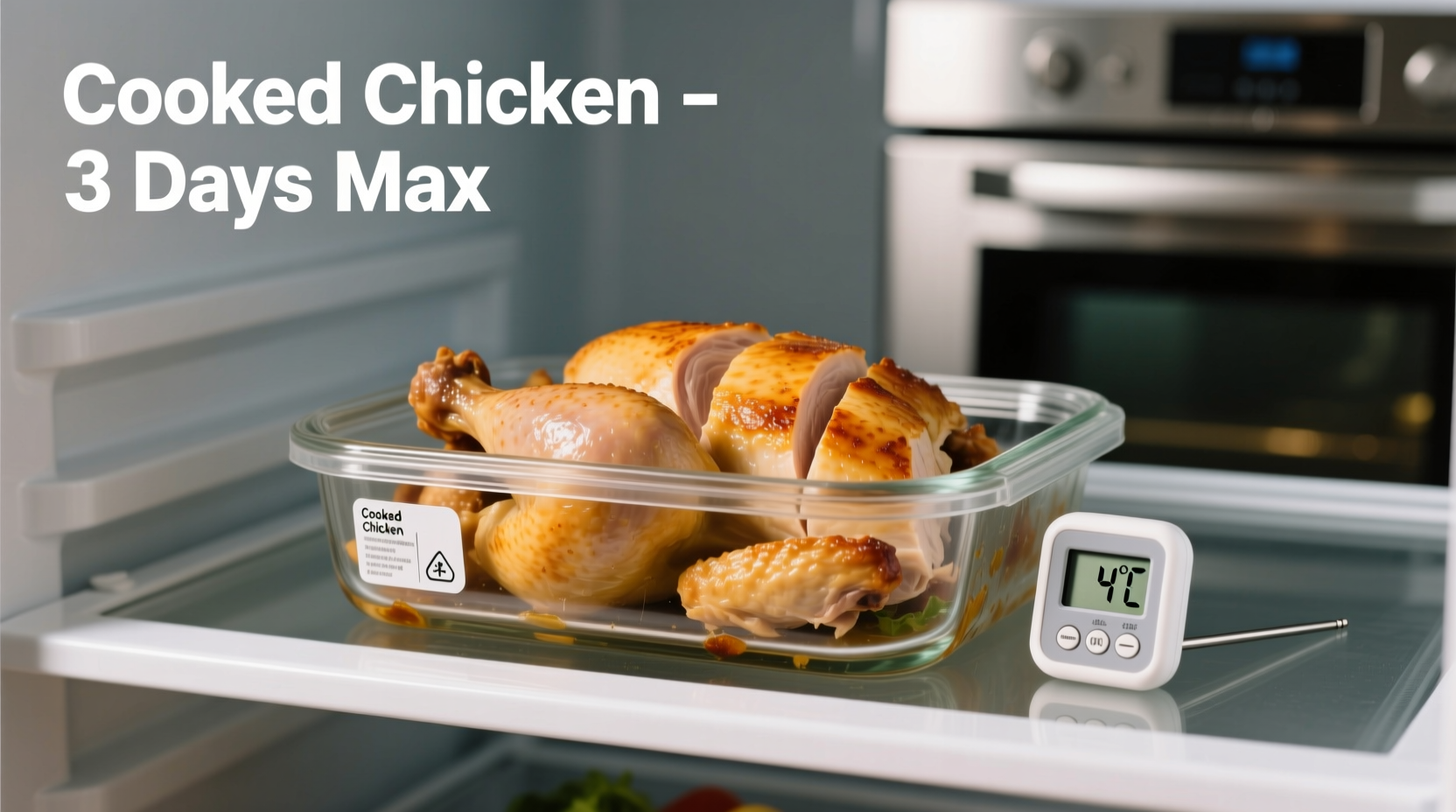Ever found yourself staring at leftover chicken wondering if it's still safe to eat? You're not alone. According to USDA Food Safety and Inspection Service data, improper food storage causes millions of preventable foodborne illnesses annually. Getting this simple calculation right protects your health while reducing unnecessary food waste.
Why Cooked Chicken Safety Matters More Than You Think
Chicken contains proteins that bacteria love to feast on, especially Salmonella and Campylobacter. These pathogens multiply rapidly between 40°F and 140°F - what food safety experts call the "danger zone." The Centers for Disease Control and Prevention (CDC) reports that 1 in 6 Americans experiences food poisoning yearly, with poultry being a common culprit.
Official Food Safety Guidelines Compared
While the USDA sets the gold standard for food safety, other organizations provide slightly different recommendations. Understanding these nuances helps you make informed decisions based on your specific situation.
| Organization | Recommended Storage Time | Special Conditions |
|---|---|---|
| USDA Food Safety and Inspection Service | 3-4 days | At or below 40°F (4°C) |
| FoodSafety.gov | 3-4 days | Properly sealed containers |
| UK Food Standards Agency | 2-3 days | Refrigerator must maintain 5°C or below |
| Australia Food Standards | 2-3 days | Use within 72 hours for best quality |
When Your Refrigerator Changes the Timeline
Not all refrigerators perform equally. A 2023 study by Consumer Reports found that 43% of home refrigerators operate above the recommended 40°F safety threshold. This seemingly small difference dramatically impacts how long you can safely keep cooked chicken in fridge.
Use these practical storage timeline adjustments based on your refrigerator's actual performance:
- Ideal conditions (verified 35-37°F): Maximum 4 days
- Average home fridge (40°F): Maximum 3 days
- Overloaded or frequently opened: Reduce to 2 days
- Power outage recovery: Discard if above 40°F for 2+ hours
Spotting Spoilage: Beyond the Clock
While calendar dates provide guidance, your senses offer crucial real-time indicators. The USDA emphasizes that time limits are maximums - spoilage can occur earlier depending on storage conditions.
Look for these unmistakable signs that cooked chicken has gone bad:
- Texture changes: Slimy film or sticky surface
- Odor shift: Sour, ammonia-like, or sulfur smells
- Color alteration: Grayish tinge or green spots
- Mold appearance: Any visible fuzzy growth

Maximizing Safety and Shelf Life
Follow these evidence-based practices to safely extend your cooked chicken's refrigerator life:
- Cool rapidly: Divide large portions into shallow containers (no deeper than 2 inches) to cool within 2 hours
- Seal properly: Use airtight containers or vacuum sealing (reduces oxidation by 78% according to Journal of Food Protection)
- Store strategically: Place on middle shelf (coldest consistent temperature zone)
- Track time: Label containers with preparation date using masking tape
Reheating Leftover Chicken Safely
Proper reheating kills surface bacteria but won't reverse spoilage. The Food and Drug Administration recommends heating cooked chicken to 165°F internally. Use these methods for best results:
- Moist reheating: Add broth or water when microwaving to prevent drying
- Stovetop method: Simmer in sauce for even heating
- Oven approach: Cover with foil at 325°F until internal temperature reaches 165°F
When Freezing Extends Your Options
If you won't eat leftovers within 3-4 days, freezing preserves quality for 2-6 months. The National Center for Home Food Preservation confirms that properly frozen cooked chicken maintains safety indefinitely, though quality degrades after 6 months.
For best freezing results:
- Portion into meal-sized servings
- Remove excess air from packaging
- Use freezer-safe containers (prevents freezer burn)
- Thaw in refrigerator, not at room temperature
Frequently Asked Questions
Can I eat cooked chicken after 5 days in the refrigerator?
No, USDA guidelines strictly recommend discarding cooked chicken after 4 days. Bacterial growth accelerates exponentially after this point, increasing food poisoning risk even if the chicken appears normal.
Does reheating chicken kill all bacteria?
Reheating to 165°F kills most bacteria but doesn't eliminate heat-stable toxins produced by certain pathogens like Staphylococcus aureus. If chicken has been stored too long, reheating won't make it safe to eat.
How long does cooked chicken last in the fridge after thawing?
Cooked chicken thawed in the refrigerator remains safe for 3-4 days. If thawed using cold water or microwave methods, consume immediately as partial warming may have occurred during thawing.
Does adding sauce extend cooked chicken's fridge life?
No, sauces don't significantly extend safety timelines. While acidic components like tomato or vinegar may slightly slow bacterial growth, USDA guidelines still apply. The entire dish should be consumed within 3-4 days.
Can I trust my nose to determine if cooked chicken has spoiled?
Not completely. Pathogenic bacteria like Salmonella often don't produce noticeable odors until dangerous levels are reached. Use the 3-4 day guideline as your primary safety measure, not just sensory evaluation.











 浙公网安备
33010002000092号
浙公网安备
33010002000092号 浙B2-20120091-4
浙B2-20120091-4